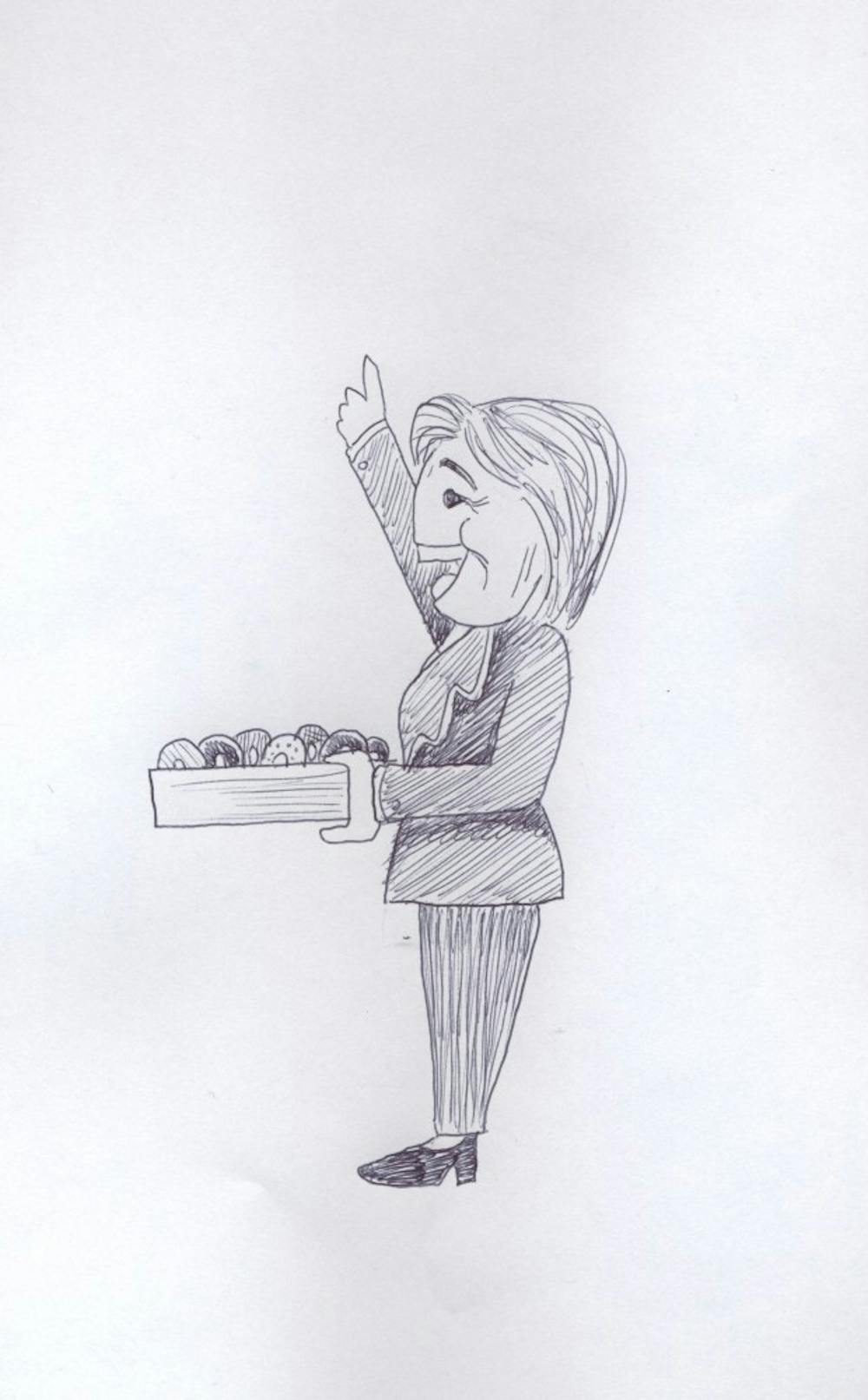by Melissa Aguilar |
A sports drink with a cozy emblazoned with the words “More like Chillary Clinton amirite?” makes a shaky appearance before transitioning to an up-close shot of Former Secretary of State Hillary Clinton.
“I’m chilling in Cedar Rapids,” the presidential hopeful says, smiling into the camera.
This is one of Clinton’s snaps on the social media app Snapchat. That kind attempt to win over young voters is either met with cheers of “yaaasss, queen” but is more likely dismissed with an eyeroll.
“I’ve heard kind of that some people think that Hillary’s kind of acting a little, like trying to be cool for the kids,” freshman and first-time voter Tayler Bradley said.
Young democratic voters continually turn out in droves for Clinton’s Democratic rival, and most liberal presidential candidate, Sen. Bernie Sanders.
Sanders captured 82 percent of the vote among those aged 17-29 in the Nevada Caucus according to exit polls by NBC. Meanwhile former Secretary of State Hillary Clinton won the clear majority of voters over 45.
Democratic candidates aren’t the only ones trying to convince young voters via social media.
Republican candidate Sen. Ted Cruz also tried to harness the power of Snapchat, setting up a geofilter of a duck with a swooshy hairdo.
“Where’s ducking Donald?” the filter asked, making a dig at fellow Republican candidate Donald Trump for not showing up to the debate a few days earlier.
Cruz barely beat out Sen. Marco Rubio and Donald Trump for the youth vote, according to CNN.
Yet for all their campaigning, 51 percent of Millennials identify with, or lean toward the Democratic Party according to a study by Pew Research Center.
So there must be something more than just fun 10 second videos or 140 character tweets that are getting young voters involved.
Political science professor Gary Malecha said young people are worried about the economy, particularly as it relates to their futures.
“A lot of young people believe the government’s been corrupted, politics have been corrupted by too much money in the political process,” Malecha said “I certainly think that the message that Sen. Sanders provides to voters that there’s too much money and there’s too much influence being played by certain groups — maybe Wall Street — has resonated with young people.”
In order for young people to feel like they have a chance in such a competitive economy, more and more of them seek out higher education.
And Sanders’ plan to make public colleges and universities free sounds like a great deal to college aged-voters already drowning in student loan debt.
Clinton has rolled out a similar plan, which promises that students attending public universities won’t have to borrow to finance their education.
Bradley thinks the idea of college being more affordable is great, especially because one of her friends had to drop out of school due to financial difficulties.
“I certainly think that (students) need to be careful in terms of their interpretation with regards to these plans, in terms of the economic viability,” Malecha said. “I think they need to give them careful examination, in terms of what their overall effect would be.”
Though it may be fun to get caught up in who Lena Dunham is designing sweaters for or which candidate “Duck Dynasty” star Phil Robertson thinks can kill and serve up a duck for gumbo, Malecha encourages young people to get out and vote.
“A lot of students find that government isn’t going to be responsive or believe that government’s not going to be responsive to their interests,” Malecha said “But that really generates a problem because if you don’t vote, then politicians don’t listen to people who (don’t) vote. That’s why I always encourage people to get involved in the political process, to make sure that their voices are heard, and make sure that they’re listened to.”
Melissa Aguilar is copy editor for The Beacon. She can be reached at aguilarm16@up.edu.








